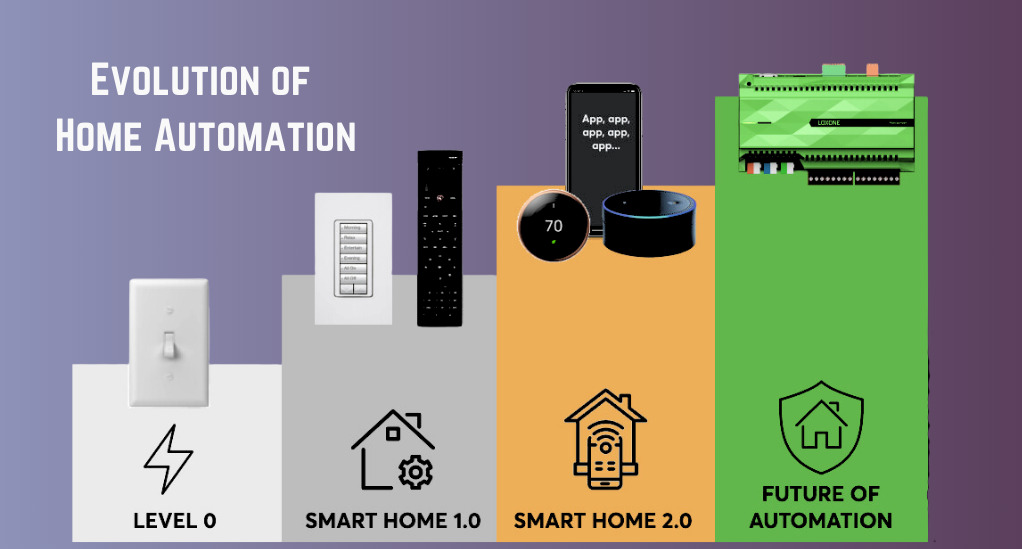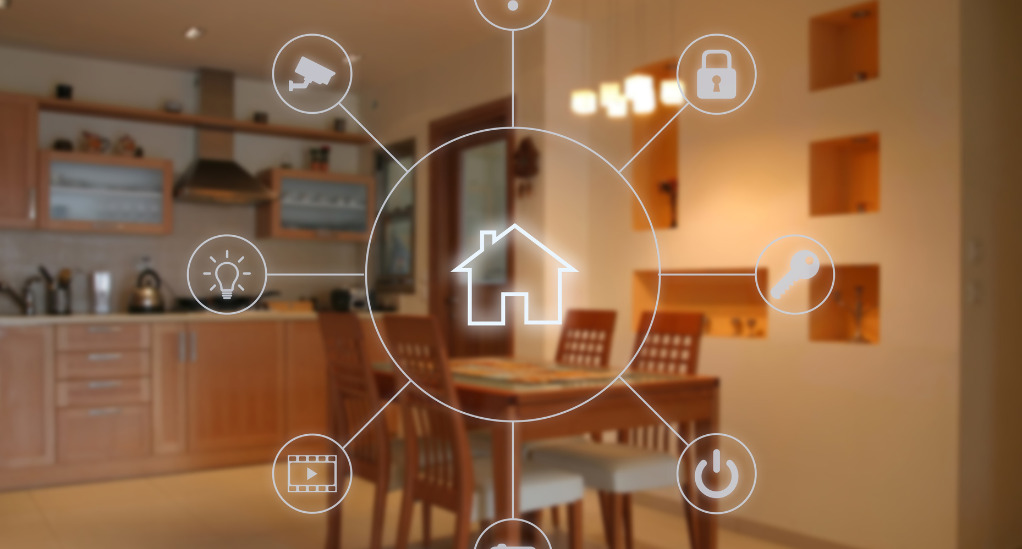Beyond the Threshold: Decoding the 2031 Odyssey of Smart Home Revolution
In a world where technology is ceaselessly evolving, the concept of a smart home is no longer a futuristic fantasy but a present reality, and it is reshaping the way we interact with our living spaces. The smart home automation market, a vibrant and rapidly growing sector, stands at the forefront of this transformation, promising unprecedented convenience, efficiency, and security in our daily lives. As we stand on the cusp of a new era, it becomes imperative to delve deep into the industry driving factors that will shape the landscape of home automation by 2031.
Definition of Smart Home Automation
Smart home automation refers to the use of intelligent devices and systems that facilitate automated control over various household functions such as lighting, heating, security, and entertainment, to name a few. These systems are designed to enhance the quality of life by offering a higher degree of control and customization of home environments, leveraging technologies such as the Internet of Things (IoT), artificial intelligence (AI), and machine learning to learn and adapt to the preferences and patterns of the inhabitants.
The Current Landscape of the Smart Home Automation Market
As of now, the smart home automation market is a bustling hub of innovation, with companies around the globe competing to develop the next groundbreaking technology. The market is characterized by a rich ecosystem of products and services, ranging from smart thermostats and voice-activated assistants to advanced security systems and energy-efficient appliances. Consumers are increasingly embracing these technologies, drawn by the allure of a more connected, convenient, and secure home.
Importance of Studying Industry Driving Factors
Understanding the driving factors behind the industry is not just beneficial, but essential in predicting the trajectory of the smart home automation market. These factors, which include technological advancements, consumer preferences, government regulations, and economic trends, play a pivotal role in shaping the market dynamics. By analyzing these elements, stakeholders can gain valuable insights into the opportunities and challenges that lie ahead, allowing them to make informed decisions and strategize effectively for the future.
As we embark on this explorative journey, we invite readers to engage with a comprehensive analysis that seeks to unveil the potential developments and trends that will define the smart home automation market by 2031. Stay tuned as we unravel the intricacies of a market poised to redefine modern living.
Historical Background
As we venture further into the intricacies of the smart home automation market, it is pivotal to take a step back and appreciate the journey that has brought us to this juncture. The history of home automation is rich and diverse, marked by visionary ideas, groundbreaking technologies, and the relentless pursuit of innovation.
Evolution of Home Automation
The genesis of home automation can be traced back to the late 19th and early 20th centuries, with the advent of electrical home appliances that promised to make life easier and more convenient. However, it was not until the late 20th century that the concept of a “smart home” began to take shape, fueled by advancements in computer technology and the emergence of the internet. The early 2000s saw a surge in home automation with the introduction of wireless networks and smart devices, setting the stage for a revolution in home living.

Milestones in the Development of Smart Home Technologies
The journey of smart home technologies is dotted with remarkable milestones that have defined the course of its evolution. From the inception of the X10 home automation protocol in the 1970s to the launch of the first smartphone-controlled home automation system in the early 2010s, the industry has come a long way. The development of voice-controlled assistants like Amazon Alexa and Google Assistant marked a significant leap, offering an unprecedented level of control and interaction with home devices. These milestones not only signify technological breakthroughs but also embody the spirit of innovation that drives the industry forward.
The Role of Early Adopters and Influencers in the Market
Early adopters and influencers have played a critical role in the growth and development of the smart home automation market. These individuals and entities, driven by a passion for technology and a vision for a smarter, more connected world, embraced automation technologies at a nascent stage, providing valuable feedback and fostering innovation. Influencers, through their platforms, have been instrumental in showcasing the benefits of smart home technologies, educating the masses, and driving consumer adoption. Their endorsement and advocacy have been a catalyst for market growth, helping to build trust and create a vibrant ecosystem where innovation thrives.
As we stand on the shoulders of these pioneers, we are better equipped to envision a future where smart home automation is not just a luxury but a standard, a seamless integration of technology into our daily lives, enhancing comfort, security, and efficiency. The historical background serves as a testament to human ingenuity and the relentless pursuit of progress, setting a firm foundation as we explore the potential heights the industry can reach by 2031.
Market Dynamics

As we navigate the vibrant landscape of the smart home automation market, it is essential to understand the forces that drive its growth and the challenges it faces. This section delves deep into the market dynamics, offering a comprehensive view of the key players steering the industry, the factors fueling its expansion, and the potential hurdles that could impede its progress.
Key Players in the Smart Home Automation Market
The smart home automation market is a competitive arena, with several giants and emerging players vying for a share of the pie. Companies like Google, Amazon, and Apple are at the forefront, offering integrated solutions that have become household names. Alongside them, we find specialized firms such as Honeywell and Siemens, which bring expertise in creating sophisticated home automation systems. These key players, with their innovative products and services, are shaping the trajectory of the market, steering it towards a future of interconnected and intelligent homes.
Market Growth Drivers and Restraints
The growth of the smart home automation market is propelled by a myriad of factors, including the increasing adoption of IoT devices, advancements in AI technology, and a growing emphasis on energy efficiency and home security. However, this growth is not without its restraints. Concerns regarding data privacy and high initial setup costs are significant hurdles that the industry must overcome to reach its full potential. Moreover, the digital divide and compatibility issues between different systems pose challenges to seamless integration.
Opportunities and Threats in the Current Market
As we stand in the present, the market is brimming with opportunities. The rising consumer awareness and willingness to adopt smart technologies present a fertile ground for innovation and expansion. Moreover, government initiatives promoting smart cities and energy-efficient solutions open new avenues for growth.
However, the market also faces threats, including the rapid pace of technological obsolescence and the potential for cyber-attacks on smart home systems, which raise security and privacy concerns. The industry must navigate these challenges wisely, leveraging opportunities while mitigating threats to build a sustainable and prosperous future.
Technological Advancements
In the rapidly evolving landscape of smart home automation, technological advancements stand as the linchpin, driving the industry towards a future of unprecedented convenience and efficiency.
The Role of AI and Machine Learning in Smart Home Automation

Artificial intelligence (AI) and machine learning (ML) have emerged as the backbone of smart home automation, facilitating intelligent decision-making and predictive analytics. These technologies empower smart devices to learn and adapt to user behaviors, optimizing energy usage, and automating routine tasks to create a living environment that is not just responsive but proactive. From voice-activated assistants to smart thermostats that adjust the temperature based on your habits, AI and ML are revolutionizing the way we interact with our homes, bringing a new level of intelligence and personalization to our daily lives.
Innovations in User Interface and Experience
The user interface and experience in smart home systems have seen a transformative evolution, with innovations aimed at making technology more intuitive, accessible, and user-friendly. Touchscreen controls, voice commands, and mobile applications offer users a variety of ways to interact with their smart home systems. Moreover, augmented reality (AR) and virtual reality (VR) are beginning to find applications in home automation, offering immersive experiences and facilitating intelligent home design. These innovations are not just enhancing user experience but are redefining the very concept of home, merging the physical and digital worlds to create living spaces that are truly smart.
Security and Privacy in Smart Home Automation
As we embrace the conveniences of smart home automation, it is imperative to address the concerns surrounding security and privacy. The integration of sophisticated encryption technologies and multi-factor authentication methods are steps in the right direction, ensuring the safety of user data and thwarting unauthorized access. Moreover, companies are investing in developing secure networks and educating users on safe practices to foster a secure ecosystem. As we move forward, the industry must continue to prioritize security and privacy, building trust and encouraging wider adoption of smart home technologies.
Future Trends and Predictions
As we navigate towards the pivotal year of 2031, the smart home automation market stands on the brink of transformative changes, driven by evolving technologies and shifting consumer preferences.
Predicted Market Trends for 2031
As we approach 2031, we anticipate a market that is more mature, with consumers having a deeper understanding and acceptance of smart home technologies. We expect to see a rise in integrated home ecosystems, where various devices and systems work in harmony, offering a seamless user experience. Moreover, the focus is likely to shift towards sustainability, with smart homes playing a crucial role in promoting energy efficiency and reducing carbon footprints. The market is also likely to witness a surge in affordable smart home solutions, making automation accessible to a wider demographic.
Potential Technological Breakthroughs

The next decade holds promise for groundbreaking technological advancements. We might witness the advent of quantum computing in home automation, offering unprecedented processing power and security. Moreover, the integration of AI with neuroscience could lead to systems capable of understanding and responding to human emotions, offering a level of personalization hitherto unseen. Additionally, we anticipate advancements in battery technology, facilitating the development of devices with longer lifespans and minimal environmental impact.
The Role of Government Regulations and Policies in Shaping the Future
Government regulations and policies will play a pivotal role in steering the direction of the smart home automation market. Policies promoting energy efficiency and data security are likely to foster a conducive environment for the growth of the industry. Moreover, governments around the world might introduce incentives to encourage the adoption of smart home technologies, facilitating a transition towards smarter, more sustainable living environments. It is also anticipated that regulatory bodies will work closely with industry stakeholders to develop standards and protocols, ensuring interoperability and security in smart home ecosystems.
Conclusion
As we conclude our exploration into the smart home automation market, we stand on the verge of a transformative era. The journey from the inception of home automation to the sophisticated systems we anticipate by 2031 is a testimony to human ingenuity and innovation.
Looking forward, we envision homes that are not just structures but intelligent entities, harmoniously integrated with technology to offer unprecedented convenience, efficiency, and security. The potential advancements in AI, user interface experiences, and government regulations promise to steer the industry towards a future rich with opportunities and sustainable solutions.


Leave a Reply